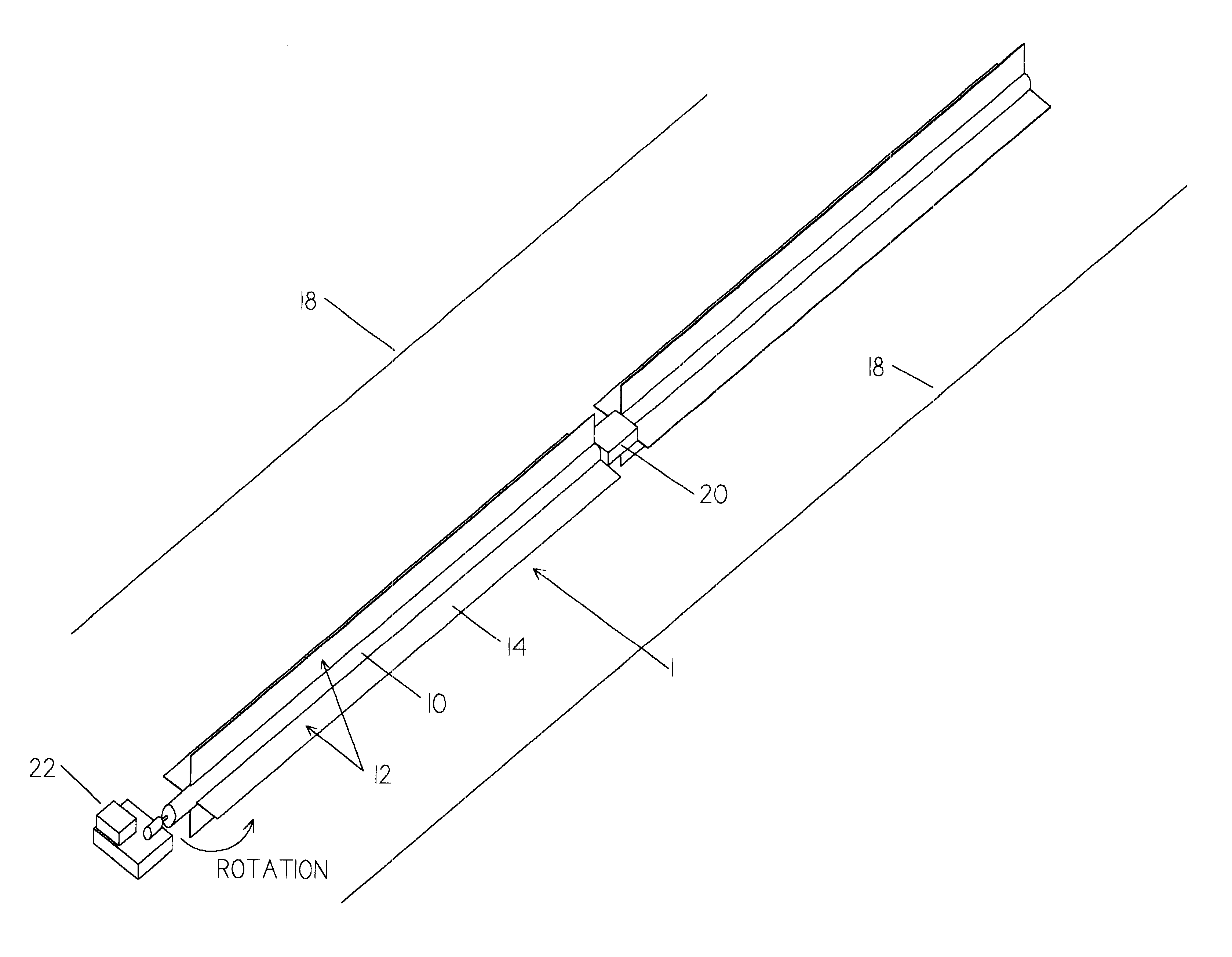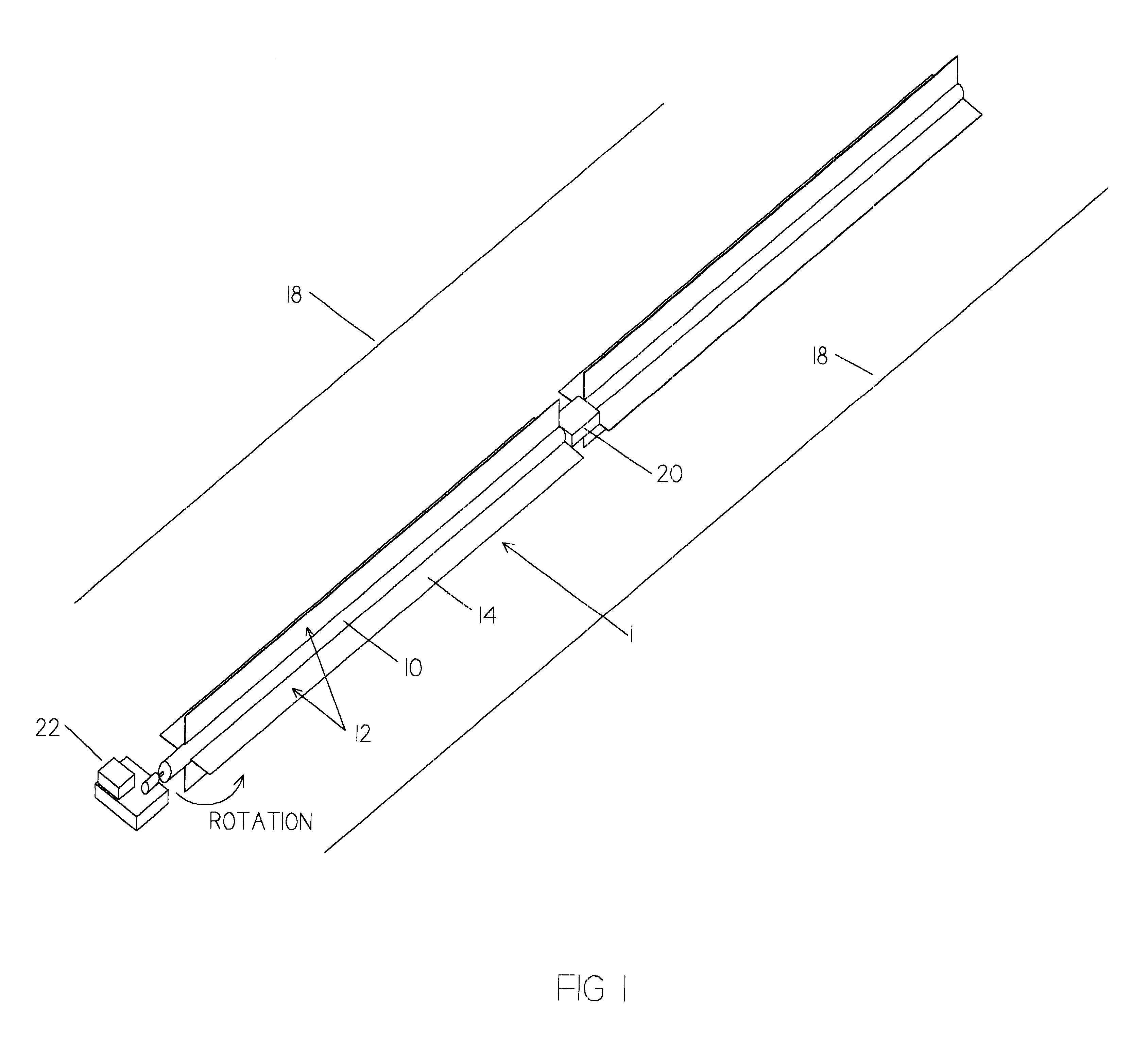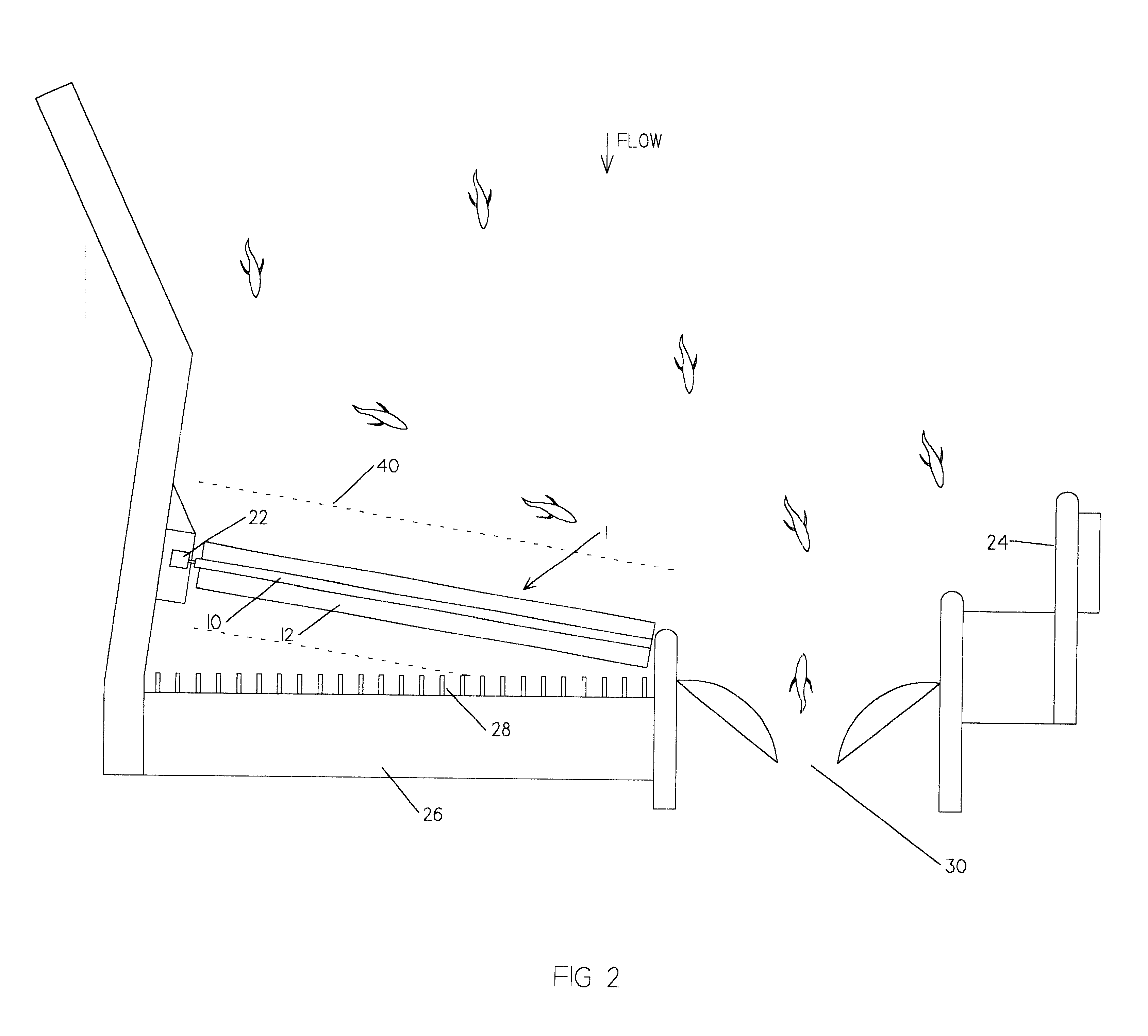Paddlewheel fish deterrent and guide
a technology of deterrent and guide, which is applied in pisciculture, pisciculture and aquaria, and marine site engineering, etc. it can solve the problems of increasing the overall bypass effectiveness, difficult to obtain with point source sound generators and current inducers, etc., and achieves convenient coexistence, convenient deployment, and relative portability.
- Summary
- Abstract
- Description
- Claims
- Application Information
AI Technical Summary
Benefits of technology
Problems solved by technology
Method used
Image
Examples
Embodiment Construction
FIG. 1 shows a perspective view of the present invention, a paddlewheel fish deterrent and guide. A paddlewheel 1 is comprised of a central shaft 10, extending from which is a series of vanes 12. Each vane 12 is constructed of a flat plate 14 extending out along the length of central shaft 10 in a manner similar to a conventional waterwheel. Alternatively, this plate may be curved to improve the hydrodynamics of paddlewheel 1. Paddlewheel 1 is of sufficient buoyancy or is suspended from an adjacent structure such that the midpoint of shaft 10 is located at water surface 18. Paddlewheel 1 is constructed short enough to facilitate handling. Sufficient numbers of sections of paddlewheel 1 are connected to one another to span the hydroelectric intake area. Power transmission between the sections of paddlewheel 1 is achieved by a universal joint 20. Construction materials for central shaft 10 and vanes 12 may be of any material that is neutrally buoyant and has sufficient rigidity to tra...
PUM
 Login to View More
Login to View More Abstract
Description
Claims
Application Information
 Login to View More
Login to View More - R&D
- Intellectual Property
- Life Sciences
- Materials
- Tech Scout
- Unparalleled Data Quality
- Higher Quality Content
- 60% Fewer Hallucinations
Browse by: Latest US Patents, China's latest patents, Technical Efficacy Thesaurus, Application Domain, Technology Topic, Popular Technical Reports.
© 2025 PatSnap. All rights reserved.Legal|Privacy policy|Modern Slavery Act Transparency Statement|Sitemap|About US| Contact US: help@patsnap.com



